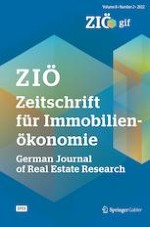Open Access 01-10-2022 | Guest Editorial
Guest Editorial—German Journal of Real Estate Research: Special Issue Corporate Real Estate and Workplace Research
Published in: Zeitschrift für Immobilienökonomie | Issue 2/2022
Activate our intelligent search to find suitable subject content or patents.
Select sections of text to find matching patents with Artificial Intelligence. powered by
Select sections of text to find additional relevant content using AI-assisted search. powered by
